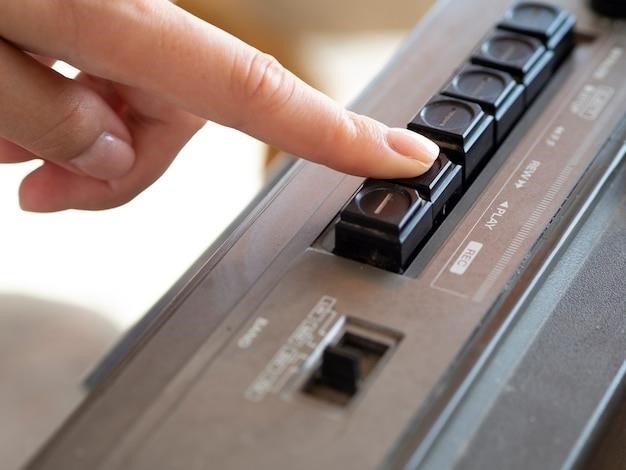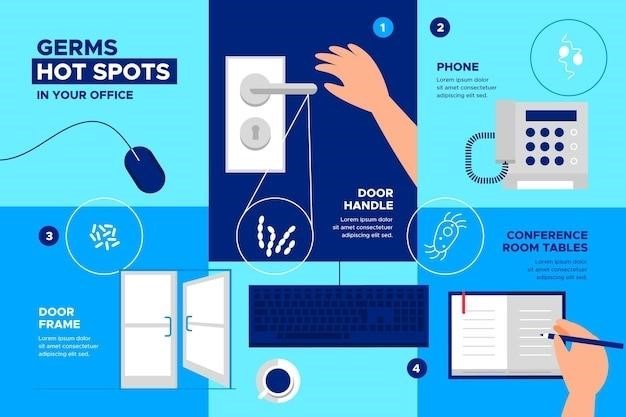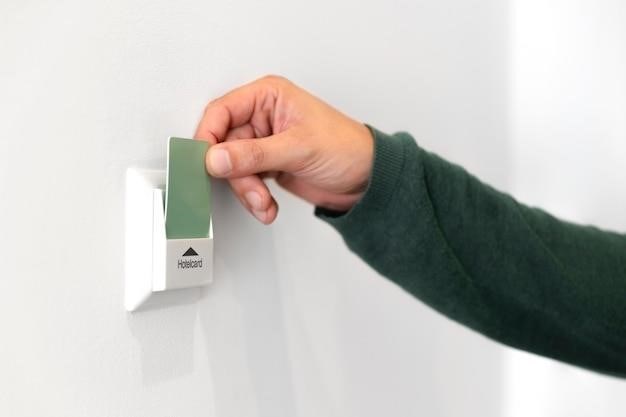Trail Guide to the Body⁚ A Hands-On Guide
Trail Guide to the Body is a comprehensive and highly acclaimed anatomy textbook written by Andrew Biel. It serves as an invaluable map of the human body, offering beautifully illustrated information for learning palpation and the musculoskeletal system. The book is designed to be a hands-on guide, teaching readers to palpate the body’s structures with ease and precision.
Author and Background
Andrew Biel, the author of “Trail Guide to the Body,” is a licensed massage practitioner with a passion for sharing his knowledge of anatomy and palpation. He is the founder of Books of Discovery, a publishing company dedicated to providing high-quality educational resources for the manual therapy community. Biel’s journey began with a deep interest in the human body and a desire to understand its intricate workings. This passion led him to pursue a career in massage therapy, where he quickly realized the importance of a solid anatomical foundation.
Driven by his commitment to excellence in manual therapy education, Biel embarked on a mission to create a resource that would empower students and practitioners to confidently navigate the complexities of the musculoskeletal system. This vision culminated in the creation of “Trail Guide to the Body,” which has become a cornerstone text for massage therapists, physical therapists, and other healthcare professionals worldwide.
Biel’s dedication to education extends beyond his writing. He has served on the faculties of various manual therapy educational institutions across the country, sharing his expertise and inspiring countless students. He is also a sought-after speaker at conferences and workshops, where he captivates audiences with his engaging teaching style and deep understanding of anatomy.
Key Features of the Book
“Trail Guide to the Body” stands out for its unique blend of anatomical accuracy, practical application, and engaging presentation. The book’s key features include⁚
- Clear and Comprehensive Coverage⁚ It provides a comprehensive overview of the musculoskeletal system, covering all major muscle groups, bones, ligaments, and tendons. The information is presented in a clear and concise manner, making it easy for readers to understand and retain.
- Detailed Illustrations⁚ The book is richly illustrated with high-quality anatomical drawings and photographs. These visuals play a crucial role in enhancing understanding and making the learning process more engaging. Readers can visualize the structures they are learning about, aiding in their palpation skills.
- Hands-On Approach⁚ “Trail Guide to the Body” emphasizes a hands-on approach to learning anatomy. It provides detailed instructions on palpation techniques, guiding readers through the process of locating and identifying different structures.
- Clinical Relevance⁚ The book connects anatomical knowledge to clinical practice. It discusses the relevance of palpation in diagnosing and treating musculoskeletal conditions, highlighting its importance in various healthcare settings.
These features contribute to the book’s widespread popularity among students and practitioners alike, making it a valuable resource for anyone seeking to deepen their understanding of human anatomy and palpation.
Target Audience
“Trail Guide to the Body” is a versatile resource that caters to a diverse audience, making it relevant for a range of individuals involved in the study and practice of human anatomy, movement, and healthcare. The book’s target audience includes⁚
- Massage Therapists and Bodyworkers⁚ This book is a cornerstone for massage therapists and bodyworkers, providing them with the anatomical knowledge and palpation skills essential for effective and safe treatment. It helps them understand the intricate structure of the body and refine their touch for optimal results.
- Students of Anatomy and Kinesiology⁚ Students pursuing degrees in fields like anatomy, kinesiology, and physical therapy find “Trail Guide to the Body” an invaluable resource. It complements their classroom learning by providing a practical and engaging approach to understanding anatomical structures.
- Fitness Professionals and Personal Trainers⁚ Fitness professionals and personal trainers benefit from the book’s anatomical insights, enabling them to better understand the biomechanics of movement and design safe and effective exercise programs for their clients.
- Anyone Interested in Human Anatomy⁚ Even those with no formal training in healthcare or movement sciences can find “Trail Guide to the Body” a fascinating and accessible guide to exploring the human body. The book’s clear explanations and engaging illustrations make it suitable for self-directed learning.
With its comprehensive coverage and practical approach, “Trail Guide to the Body” empowers individuals across various disciplines to gain a deeper understanding of the human body and its intricacies.
Content Overview
Trail Guide to the Body is structured to provide a comprehensive and practical understanding of the human musculoskeletal system. The book delves into the intricate details of muscles, bones, and other anatomical structures, making it an invaluable resource for anyone seeking to enhance their knowledge of the human body. The content is organized to guide readers through a systematic exploration of the body’s regions, facilitating a deep understanding of their interconnectedness.
The book’s content is divided into sections, each focusing on a specific region of the body, including the head and neck, upper extremities, lower extremities, trunk, and back. Within each section, readers will find detailed descriptions of individual muscles, bones, and other anatomical structures, accompanied by clear illustrations and palpation instructions. The focus is on providing practical guidance for locating and identifying these structures through palpation techniques, making it an excellent tool for hands-on learning.
Beyond detailed anatomical descriptions, the book incorporates clinical applications, offering insights into how the musculoskeletal system functions in various movements and postures. This knowledge is particularly valuable for professionals working in fields like massage therapy, physical therapy, and fitness, as it helps them understand the potential causes of pain, dysfunction, and injury.
Trail Guide to the Body’s content is designed to be both informative and engaging, making it a valuable resource for students, practitioners, and anyone interested in gaining a deeper understanding of the human body.
Musculoskeletal System
The core of “Trail Guide to the Body” revolves around a comprehensive exploration of the musculoskeletal system, the intricate network of bones, muscles, tendons, ligaments, and joints that forms the framework and enables movement of the human body. The book meticulously guides readers through the complexities of this system, providing a detailed understanding of its structure, function, and interrelationships.
The book’s approach to the musculoskeletal system is both anatomical and functional, encompassing both the static structures and the dynamic processes that govern movement. Readers are introduced to the names, origins, insertions, actions, and innervations of individual muscles, along with the anatomical landmarks and bony features that guide palpation. This detailed anatomical knowledge serves as the foundation for understanding the mechanics of movement and the potential causes of musculoskeletal dysfunction.
The book’s emphasis on practical application extends to the presentation of the musculoskeletal system. It employs clear and concise language, along with numerous illustrations and diagrams, to facilitate comprehension; The content is organized logically, progressing from the basics of anatomy to more advanced concepts, making it suitable for both beginners and experienced learners.
Palpation Techniques
“Trail Guide to the Body” is renowned for its in-depth exploration of palpation techniques, the art of using touch to identify and explore the structures of the body. The book goes beyond simply listing anatomical landmarks; it provides a practical and systematic approach to palpation, emphasizing the importance of a gentle and precise touch.
Biel’s expertise as a licensed massage practitioner shines through in his detailed descriptions of palpation techniques. He guides readers through a series of steps, from identifying the starting point of palpation to the specific movements and pressure needed to locate and differentiate various structures. The book also emphasizes the importance of anatomical knowledge as a foundation for effective palpation, ensuring that readers understand the underlying structures they are exploring.
The book delves into various palpation techniques, including superficial and deep palpation, as well as techniques for identifying specific muscle bellies, tendons, ligaments, and bony prominences. It also addresses the importance of considering the client’s body mechanics, posture, and movement patterns during palpation. This holistic approach ensures that readers develop a comprehensive understanding of how to effectively utilize palpation in a therapeutic setting.
Clinical Applications
“Trail Guide to the Body” is not merely a theoretical exploration of anatomy but a practical tool for professionals in various healthcare fields. The book’s comprehensive approach to palpation and its detailed descriptions of anatomical structures provide a solid foundation for a wide range of clinical applications.
For massage therapists, the book is a valuable resource for developing precise and effective treatment techniques. By understanding the location and function of muscles, bones, and other tissues, therapists can tailor their massage strokes to address specific musculoskeletal imbalances and promote healing. The book’s detailed illustrations and clear explanations also make it an excellent teaching tool for massage students.
The book’s clinical applications extend beyond massage therapy. Physical therapists, athletic trainers, chiropractors, and other healthcare professionals involved in musculoskeletal assessment and treatment can benefit from the book’s insights. The ability to accurately locate and assess anatomical structures through palpation is crucial for effective diagnosis and treatment planning. “Trail Guide to the Body” equips professionals with the knowledge and skills to confidently apply palpation techniques in their clinical practice.
Reviews and Reception
“Trail Guide to the Body” has garnered widespread acclaim and positive reviews from both professionals and students in the fields of massage therapy, physical therapy, and other healthcare disciplines. The book’s comprehensive coverage of anatomy, its detailed illustrations, and its practical approach to palpation have consistently been praised by reviewers.
Reviewers often highlight the book’s clarity and accessibility, making it an ideal resource for both beginners and seasoned practitioners. The clear explanations, detailed illustrations, and step-by-step instructions make it easy for readers to understand and apply the information. The book’s focus on hands-on learning and its emphasis on practical application have also been commended, as it empowers readers to confidently locate and palpate anatomical structures.
Furthermore, the book’s enduring popularity and multiple editions are a testament to its continued relevance and value in the healthcare community; “Trail Guide to the Body” has become a standard reference for many professionals and students, solidifying its reputation as a trusted and essential resource for anyone seeking to deepen their understanding of human anatomy through palpation;
Other Works by Andrew Biel
Andrew Biel, the author of “Trail Guide to the Body,” has made significant contributions to the field of manual therapy through his extensive writing and teaching. Beyond his widely acclaimed anatomy textbook, Biel has authored several other books that have gained recognition in the healthcare community. These works delve deeper into specific aspects of manual therapy and provide valuable insights for practitioners and students alike.
One notable work is “Trail Guide to Movement⁚ Books of Discovery,” which explores the intricate connections between movement, anatomy, and the human experience; Biel’s book “Understanding Anatomy⁚ A Hands-On Guide” offers a comprehensive approach to learning anatomy, emphasizing practical application and hands-on exploration. His book “Trail Guide to the Body Workbook” serves as a companion to “Trail Guide to the Body,” providing additional exercises and activities for reinforcing anatomical knowledge.
Through his diverse range of publications, Andrew Biel has consistently demonstrated his passion for education and his dedication to empowering individuals with a deeper understanding of the human body. His books have become essential resources for those seeking to enhance their knowledge and skills in the realm of manual therapy.

Availability and Formats
“Trail Guide to the Body” is widely available in various formats, making it accessible to a broad audience of students, practitioners, and enthusiasts of anatomy and manual therapy. The book can be purchased both in physical and digital forms, catering to diverse preferences and learning styles. Physical copies are readily available through online retailers such as Amazon and Barnes & Noble, as well as through specialized bookstores that cater to the healthcare and wellness industries. For those who prefer digital access, the book is offered as an e-book, allowing for convenient reading on a variety of devices, including smartphones, tablets, and e-readers.

Furthermore, the book’s popularity and enduring relevance have led to the availability of used copies, often at discounted prices, making it a more budget-friendly option for those seeking to acquire this valuable resource. The availability of “Trail Guide to the Body” in multiple formats ensures that individuals can access its comprehensive anatomical knowledge and practical guidance in a way that best suits their needs and preferences.
“Trail Guide to the Body” stands as a testament to Andrew Biel’s dedication to enhancing the understanding and application of human anatomy. Through its clear explanations, detailed illustrations, and practical guidance, the book empowers both students and practitioners to confidently navigate the intricacies of the musculoskeletal system. It serves as a valuable resource for those seeking to deepen their knowledge of anatomy, refine their palpation skills, and enhance their clinical practice. The book’s enduring popularity and widespread use in educational institutions and professional settings are a testament to its enduring relevance and value in the field of manual therapy. Whether you are a student embarking on your journey in anatomy or a seasoned practitioner seeking to refine your skills, “Trail Guide to the Body” offers a comprehensive and engaging guide to unlocking the secrets of the human form.





























Leave a Comment